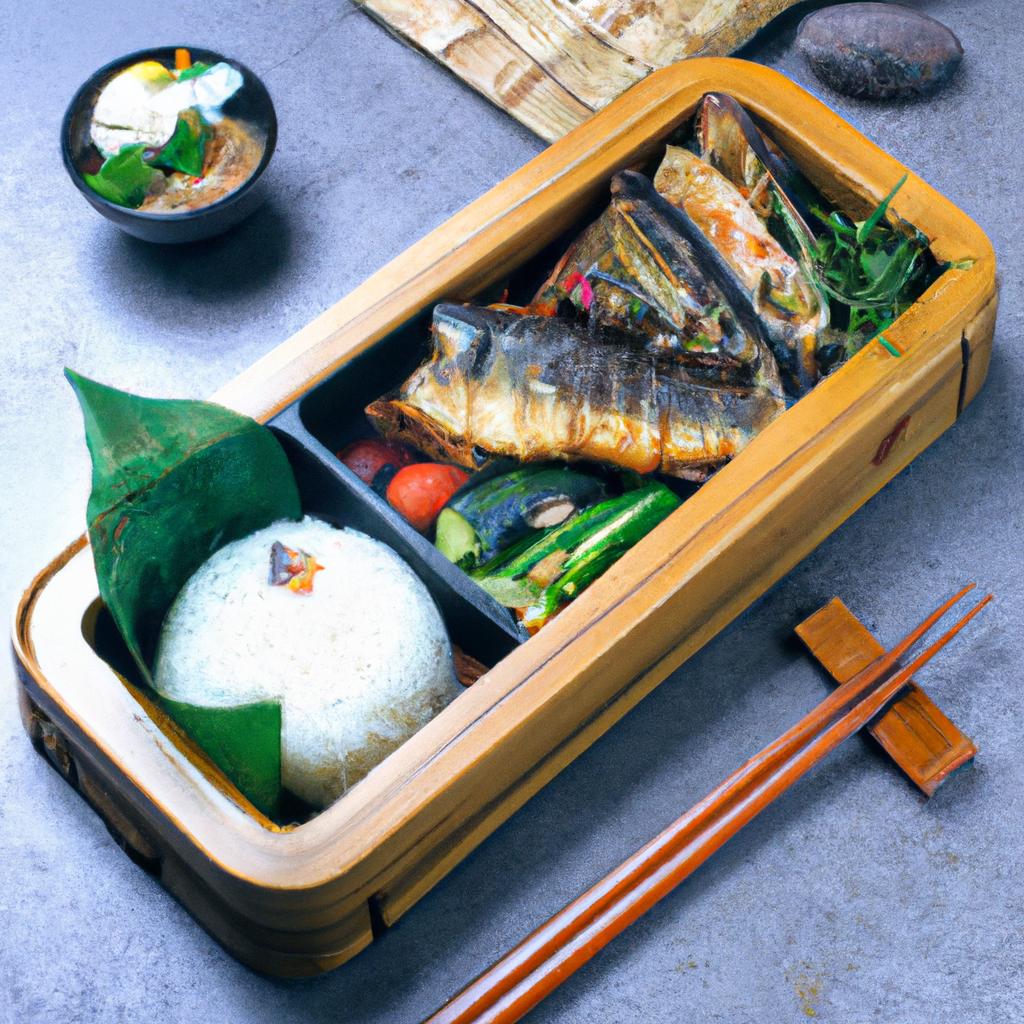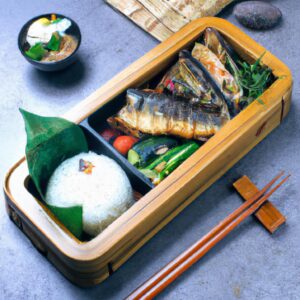Experience Traditional Japanese Cuisine
For visitors to Japan, one of the best ways to experience the culture of the country is through its food. Traditional Japanese cuisine has long been cherished by locals and is now gaining popularity around the world.
Traditional Japanese cuisine is characterized by its fresh ingredients, simple yet delicate cooking techniques, and the harmony of flavors that are combined in various dishes. A wide range of dishes are found within this tradition, from sushi and tempura to ramen and soba noodles. All these dishes put an emphasis on the use of fresh ingredients combined with a variety of seasonings, such as soy sauce, mirin, and miso.
Tasting traditional Japanese cuisine can be one of the greatest experiences for visitors. Not only can they enjoy the unique flavors of Japanese food, but also learn about the culture and traditions behind the dishes. Eating out in Japan is very much part of the experience, and visitors can take part in the unique style of food service found in the country.
For those wishing to experience traditional Japanese cuisine, the information below will provide them with the basics of the cuisine, different types of dishes to try, tips on where to go, and how to properly interact when dining out.
The Basics of Traditional Japanese Cuisine
Traditional Japanese cuisine is a unique style of food that has been passed down through generations and has evolved into what we know today. This type of cuisine relies heavily on fresh ingredients, including seasonal vegetables, fresh fish, and locally sourced meats. As the Japanese diet consists of mostly seafood, it’s natural to find many dishes focused around fish and other ocean products. Soybean products, such as miso, tofu, and soy sauce are also foundational components of traditional Japanese cuisine.
The history of this type of food reaches back thousands of years. It first started with indigenous people living in Japan, who incorporated the natural vegetables and fish in their diets. Then, during the feudal Edo period, Japanese cuisine began to incorporate more styles from other countries, including China. Over time, these different influences have created the modern version of traditional Japanese cuisine.
Traditional Japanese Cuisine is known for its balance and harmony of flavors. In addition to the ingredients already mentioned, other key components include seaweed, mushrooms, tea, rice, and various spices and seasonings. These components provide unique flavor combinations to yield a truly unique dining experience.
Types of Dishes to Find
When it comes to traditional Japanese cuisine, there are many delicious dishes to try! From sushi and ramen to tempura and sashimi, there is something to suit every palate.
Sushi is arguably the most famous of all Japanese dishes. It is typically prepared using vinegared rice, combined with seafood, vegetables, or even egg. Sushi can be served as individual pieces, known as nigiri, or in a roll (maki roll).
Ramen is another popular dish, made up of wheat noodles that are served in a broth made from soy sauce, fish stock, or miso. Ramen can contain many different toppings, like boiled egg, pork slices, bamboo shoots, and seaweed.
Tempura is another dish that is widely appreciated in Japan. It consists of seafood and vegetables that have been lightly battered before being deep-fried, then served with a dipping sauce. The light, crispy batter and the savory sauce make tempura an irresistible comfort food.
Sashimi is thinly sliced raw fish, usually served rolled up or arranged on a plate. It’s a delicacy that takes skill to master, as it requires the utmost attention to detail when slicing.
These are just some of the types of traditional Japanese cuisine you can find. With so many options, there is something for everyone to enjoy!
Popular Restaurants
When exploring traditional Japanese cuisine, there are a variety of restaurants available to visit. Here are just a few of the most popular places to try it:
- Sushi Tengoku: Serving some of the freshest seafood in Tokyo, this restaurant is known for its generous portions and delicate flavors. Try their house special sushi roll that includes eel, shrimp, and cucumber.
- Kaiseki Asuka: This restaurant specializes in high-end Kaiseki cuisine, or traditional Japanese multi-course dining. With its elegant atmosphere and attention to detail, this is a must-try for a luxurious evening.
- Ramen Street: Located in Tokyo Station, Ramen Street is home to eight stalls representing different parts of Japan. From earthy shoyu ramen to creamy miso noodles, this is the perfect spot to sample different types of ramen.
These are just a few of the countless restaurants dedicated to traditional Japanese cuisine. It’s easy to find something that fits your budget and tastes.
Eating Out Etiquette in Japan
When eating out in Japan, it’s important to understand the etiquette of the country. Japanese culture places a strong emphasis on respect and politeness, so it’s important that visitors and newcomers alike are aware of the proper way to behave while dining at a restaurant. Here are some tips on how to order food, display proper manners, and use the correct utensils.
Ordering Food:
When ordering food in Japan, it is customary to do so with respect and politeness. Always address your server as “sumimasen” (meaning “excuse me”) before placing an order. It is also polite to thank the server after they have taken your order.
If you are given a menu with pictures or illustrations of the dishes, it is often easier to point to what you would like to order. If the menu is written only in Japanese, remember to ask the server for help in understanding what each dish is.
Display Proper Manners:
When dining out in Japan, it is important to display proper manners. Slurping noodles, biting sushi, or eating rice directly from the bowl is generally okay, however, it is rude to talk with a full mouth of food. Japanese people tend to be quieter when they are eating, so avoid talking loudly and using profanity or rude words.
It is also important to wait for everyone to be served and thank the server again before beginning to eat. Chew with your mouth closed and try not to make too much noise when eating. When you are done, it is polite to leave a small tip on the table or at the counter.
Using Utensils:
When eating traditional Japanese cuisine, it is important to use the correct utensils. Chopsticks are the primary utensils used when eating most dishes, so make sure you know how to use them properly. When you receive your dish, place your chopsticks on top of the lid of the bowl or container your dish came in.
If a spoon is provided, use it to scoop sauces, soup, or other items. If a fork is given, it is likely meant for cutting pieces of meat or larger items such as tempura. When finished with the meal, place your chopsticks back where you found them and thank the server once again for the meal.
Following these simple rules of etiquette will ensure that your experience with traditional Japanese cuisine is an enjoyable and respectful one.
Shopping Tips for Traditional Japanese Cuisine
If you’re looking to bring a taste of traditional Japanese cuisine back home with you, there are a few things to look out for when you hit the shops. Be sure to seek out fresh, quality ingredients to truly recreate the flavors you experienced in Japan. Here are some tips to help you find the right things:
- Seek Out Local Markets: You can find all kinds of traditional Japanese foods at local markets, from fresh fish and seafood to pickled vegetables. There’s also a lot of fun souvenirs to be had!
- Don’t Forget Instant Meals: For an easy way to recreate the flavor of Japanese cuisine at home, try picking up some pre-made instant meals – these usually come in the form of noodles or rice bowls.
- Sauces and Condiments: Pantry staples like soy sauce, miso paste, and pickled ginger are essential for authentically recreating the flavors of traditional Japanese cuisine. Try picking up a few of these ingredients if you plan on cooking at home.
By following these simple tips, you’ll have no problem bringing a bit of traditional Japanese cuisine back home with you!
Experience the Delectable Traditional Japanese Cuisine
For centuries, traditional Japanese cuisine has been a source of pride, admiration, and enjoyment for locals and visitors alike. As one of the oldest culinary traditions in the world, this vibrant cuisine is steeped with heritage and an abundance of flavorful ingredients. From sushi, to ramen, to tempura, there’s something to tantalize the taste buds of all types of eaters. Whether you are visiting Japan for a once-in-a-lifetime adventure or looking to try a different way of eating, traditional Japanese cuisine is sure to wow your senses.
No matter what kind of traveler you are, experiencing traditional Japanese cuisine is an absolute must! Along with exploring the country’s impressive culture, iconic temples, and breathtaking scenery, eating delicious dishes from this ancient cuisine is an absolute treat. Japan’s food offerings offer everything from fresh seafood and seasonal vegetables to exquisite savory dishes that will make the taste buds explode.
Not only are there many dishes to enjoy, but they also come in a variety of presentations and flavors. Want a bowl of comforting ramen? Prefer your food deep-fried and crisp? Or looking for something light and healthy? Whatever your preference is, traditional Japanese cuisine has something to offer. By trying this ancient and tasty cuisine, visitors to Japan can fill their bellies with exciting and unique dishes that will tantalize their taste buds.
comments: 0

